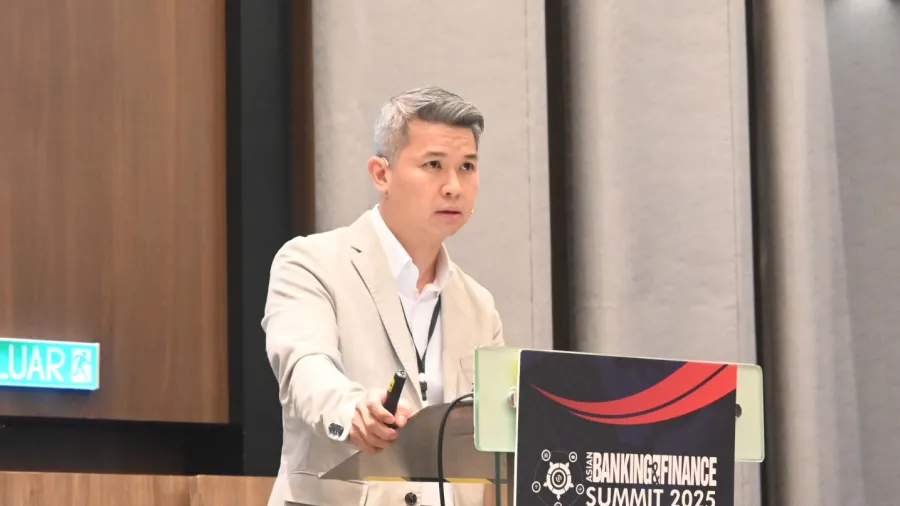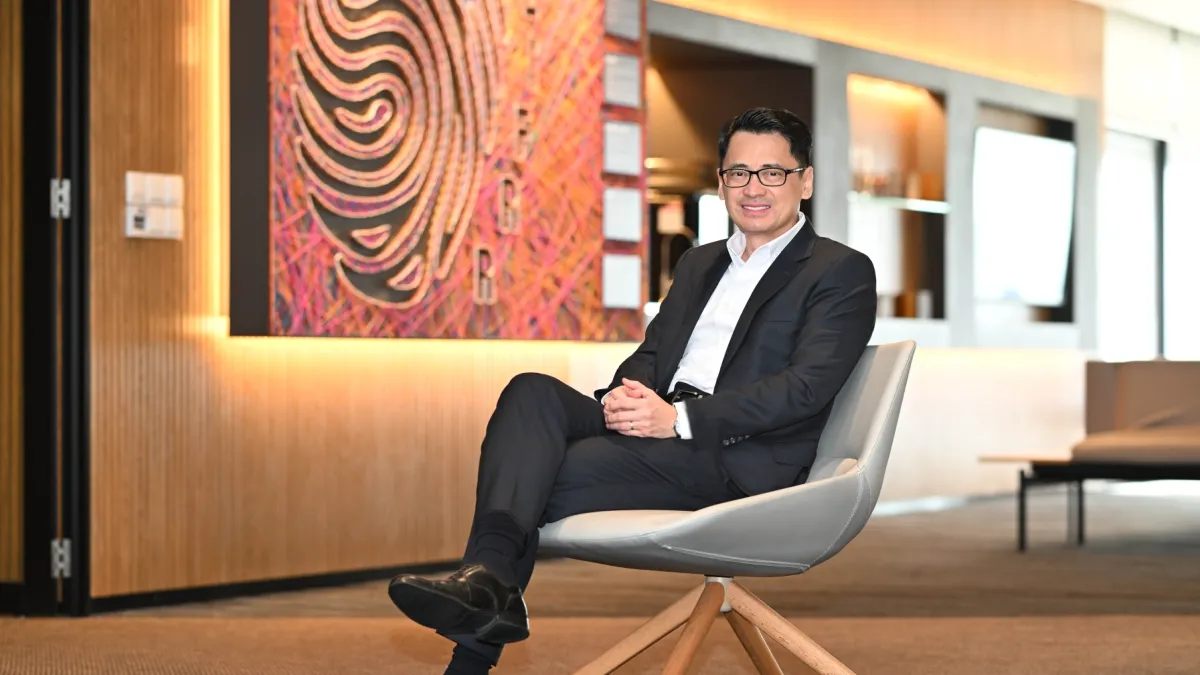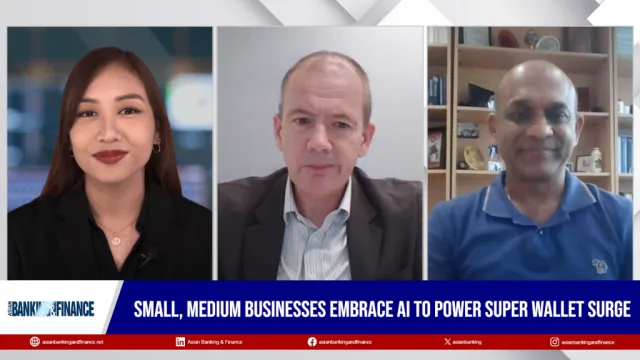
How embedded finance and AI are reshaping Malaysia’s finance sector
Value migration to non-bank players with a "focused" model is accelerating.
Digital innovation, embedded finance, artificial intelligence (AI), and personalisation are amongst factors that will shape Malaysia’s finance and insurance industry in the near future, market leaders and experts told attendees of the Asian Banking & Finance and Insurance Asia Summit - Malaysia 2025.
Over 146 attendees attended the full-day event, held on 15 April at the Kuala Lumpur Hotel & Convention Centre.
Mohd Prasad Hanif, Secretary General of the Association of Development Finance Institutions Malaysia (ADFIM), kicked off the summit with a discussion on the key roles of Development Financial Institutions (DFIs) amidst a turbulent economic climate.
DFIs are specialised financial institutions established by the Malaysian government to develop and promote key sectors considered strategically important to the socio-economic development objectives of the country. These include small and medium enterprises (SMEs) and the agriculture industries, amongst others.
“Most private commercial entities will be reluctant to lend out [to these sectors], and this is where DFIs step in,” Hanif said.
DFIs are expected to serve this countercyclical role— that they would lend out to riskier segments at times of economic downturns, whereas traditional banks are expected to turn more defensive.
Isaac Tan, partner at the Boston Consulting Group (BCG), followed with a discussion on the financial services of the next decade.
Tan noted that large parts of capital held in the banking industry remained undervalued. Whilst banks’ valuations all rose on average have increased over the past few years, the gap between leaders and laggards have also widened, he said.
Tan said that value migration to non-bank financial players with a “focused” model— meaning they specialize in only one or two services, such as payments, wealth and asset management—- are set to accelerate.
Banks are increasingly taking note of this. For example, in the Asia Pacific region, banks have entering the private credit market.
“They participate through joint ventures, partnerships,” Tan said, adding that banks are participating as investors and not necessarily as service providers.
Hanif and Tan’s opening sessions were followed by a panel discussion on direct disruptors to the banking industry: digital banking. Moderator Ravi Kittane, a partner for Ernst & Young in Malaysia, joined representatives from GXBank, Boost Bank, Aeon Bank, and Ryt Bank to discuss the innovations brought by digital banks in Malaysia.
All four digital bank representatives said that they hope to give constant value to Malaysian banking customers.
Having the ability to innovate new propositions in the market is one value that digital banks give to their customers, said Fozia Amanulla, CEO of Boost Bank. Amanulla was joined by Pei Si Lai, CEO of GXBank; Aizuddin Danian Izham Cheong, Chief Personal Banking Officer for AEON Bank; and Melvin Ooi, CEO of Ryt Bank.
In an afternoon session, Maybank’s Dr. Chan-Cheong Siew, Group Chief Strategy & Transformation Officer shared the bank’s digital transformation journey over the past three years.
Malaysia’s biggest bank by assets questioned how they can drive shareholder value and return of assets (ROE) in the changing world— one that is volatile and digital-focused.
“The whole idea is, how do we become from good to great in the next three years?” Chan told the attendees.
The answer, Chan said, lies in ensuring that their transformation is group-wide and not just aimed at servicing a select group of customers. “Transformation should not just be concentrated in a small group of people, but the whole group, so that no-one is left behind.”
The outcome saw Maybank’s income and market share rise, he said. “In Year 1, we exceeded our target by 80%, then by year 2, we exceeded our target by 117% accumulative,” Chan said.
Filling the gap, getting attention
Frost & Sullivan Malaysia’s Hazmi Yusof followed the break with a discussion on the megatrends that will shape the business sector through 2040.
Yusof, who is the Country Head of Frost & Sullivan Malaysia, noted that technology will advance to a point that it will fill the gap left behind by the global population decline.
“By 2040, technology will advance to counterbalance declining populations in key global regions like Asia, LATAM, and Europe. Immigration debates will focus more on refugees, while migrant workers may face less opposition,” Yusof told the attendees.
From business megatrends, Adobe’s Senior Solution Consultant Jeff Wee followed with a session on using artificial intelligence (AI) for a more personalised customer experience— especially in an era of oversaturated brand messages and shorter customer attention spans.
The average attention span of a Gen Z individual is now just 8 seconds, making it even more critical for companies to deliver real-time 1:1 personalisation.
Generative AI can help teams save up to 40% time spent across their marketing processes, according to Wee.
Dreamfolks Executive Director Balaji Srinivasan expanded on this discussion on personalised services, this time focusing on reward tiers such as in credit cards.
Srinivasan, who is also Dreamfolks’ Chief Technology Office, highlighted incentive based models. For example, within one credit card product, operators can provide personalised value propositions through virtual tiers connected to product KPIs such as spending, usage, and engagement, amongst others.
Frost & Sullivan’s Yusof returned to moderate the second panel discussion, which focused on how to unlock the growth of small and medium enterprises (SMEs) through digital finance and insurance.
Pallav Greg, Head of Business Banking at Standard Chartered; and KC Wong, ASEAN Market Specialist with Modefinance International & Senior Advisor, Asia Credit Reporting Network (ACRN), both highlighted embedded finance as key to enabling this.
As an example, Greg noted that banks are now embedded in the app itself, ready to provide loans to clients at the point of sale, instead of having clients open another app just to get a loan.
PwC Malaysia’s Director Tanvinder Singh kicked off the afternoon sessions with a discussion on building trust in financial institutions.
Sin Ta Poon of Datadog explored scaling the observability and security of financial institutions.
Sin, who is an Enterprise Solution Engineer for Datadog, noted the importance of having just one platform for monitoring amidst the rising complexity involved as a company’s technology delivers more business outcomes.
Amongst challenges in monitoring include having more endpoints to monitor, having a plethora of data to process, and having siloed teams and tools.
Continuing on the topic of personalisation and innovation, the summit wrapped up with a panel on the next frontier of financial services. Roland Berger Asia’s Laurent Doucet moderated a discussion that delved on AI, data, and customer centricity.
Doucet was joined by Prashant Lulla, Head of Customer Experience APAC, Zurich Insurance; Chris Eng, Chief Strategy Officer, Etiqa Insurance & Takaful; Rajesh Gupta, Regional Head of Affluent Product & Proposition, CIMB; and Chun Nam Ng, Chief Financial Officer, Manulife Malaysia.











 Advertise
Advertise










